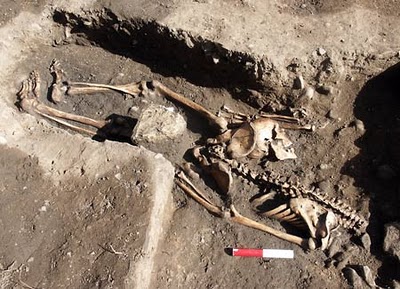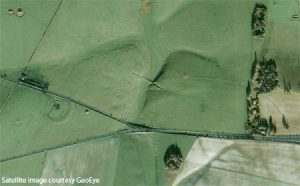 London-based nightclub Ministry’s motto of sound system first, interior design second, lights third made them one of the most famous gathering places for those who worship bass.
London-based nightclub Ministry’s motto of sound system first, interior design second, lights third made them one of the most famous gathering places for those who worship bass.
But how did those conceptualising Stonehenge plan to enchantthe Neolithic congregate?
Rupert Till, an acoustics and music technology expert, asserts the stone circle would have created a perfect (early design) amplifier – making Stonehenge the place to be from the Stone Age onwards.
Professor Tillsays Stonehenge when it was in perfect shape would have worked perfectly to resonate sound, creating trance-like music which would have aided rituals and worship at the site.
To test this theory, Dr Till and fellow acoustician Bruno Fazenda recorded popping balloons at the Wiltshire monument:
Video: Summer Solstice at Stonehenge
Video and photographs from the Stonehenge Summer Solstice 2010 celebrations. The music ‘Drunken Druid’ is by Druidicca, and the pretty statue you see during the sunrise fragment is the ‘Ancestor’. Of course, King Arthur is featured in the video as well (more about this video).
This was not some bizarre pagan ritual. It was a serious attempt to capture the “impulse response” of the ancient southern English stone circle, and with it perhaps start to determine how Stonehenge might have sounded to our ancestors, explains Trevor Cox on the New Scientist website.
The scientists used this recording to build a virtual model that allows to compute how any sound would sound within the megalithic monument.
Applying the model to a drum beat, they found that there is a noticeable difference:
There is more reverberation or ringing to the drumming sound thanks to the reflections off the stones.
What’s more, the tonal balance of the sound is entirely different: it has become much deeper, as if the treble has been turned down.
According to Dr Till, the design didn’t take place by chance. He points out the acoustic properties are too specific. The stones and lintels are all curved which helps to reflect the sound perfectly and when Stonehenge’s builders placed a stone in a particular place, they would have noticed a change in sound.
Some spots in the site produce an extremely peculiar acoustic effect, making them excellent locations for whoever was leading the gathering to position him (or herself), demonstrated in the video on the right (it does remind of early Autechre).
Solar Alignment First
Maybe I’m refusing to think outside the box or circle, in this case here, but my best guess would be that for those who contributed to Stonehenge, acoustic qualities wasn’t the first thing on their minds.
Rather, they must have opted for astronomical alignment first, we like circles (and Euclid won’t be around for at least another thousand years) second and many still unknown factors (after all, Stonehenge is a complex site, constructed in several phases) third and forth and fifth.
Moving about 30 tons of Sarsen stone, just to get a different pitch?It is more likelythey’d optfor upgrading the musical instruments or the ‘Shaman’ used? Taking ancient amphitheatres into account, a bank around the construction might have also improved the sound, yet Stonehenge is the only ‘henge’ which had to do with just a ditch? Recent research indicates that there were more than just a few gathering at and possibly in the stone circle. How would their physical presence affect the modulation?
Although Druidicca’s live performance at the Stonehenge Summer Solstice(as seen in this video)is something memorable, take my advise:visit Stonehenge for the sunrise, and Ministry for the bass.



